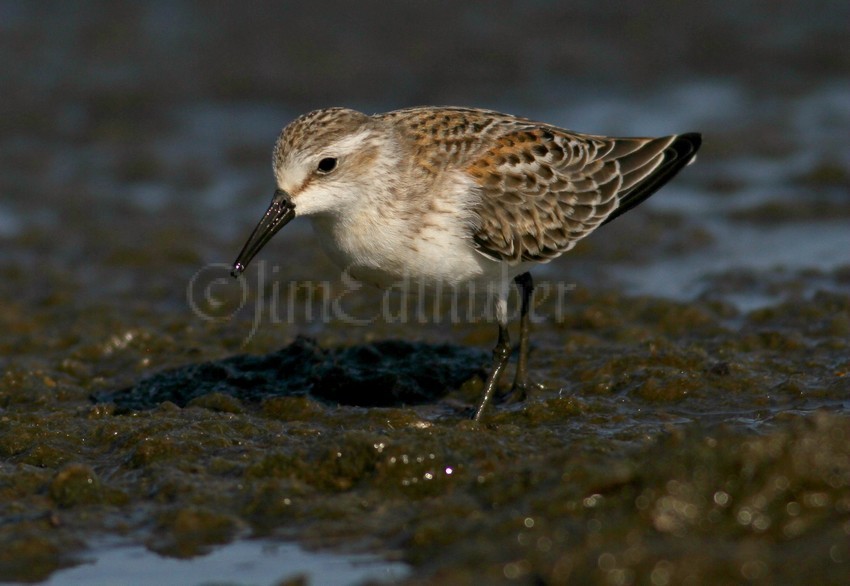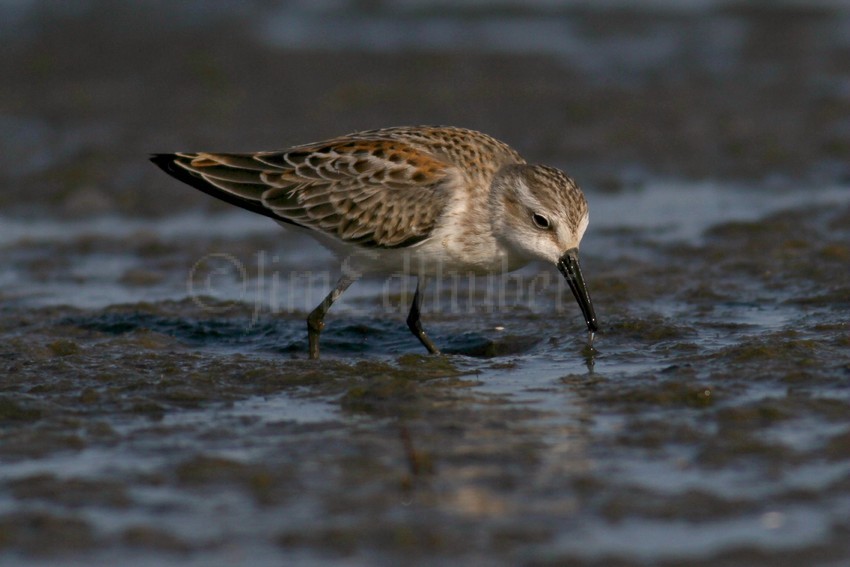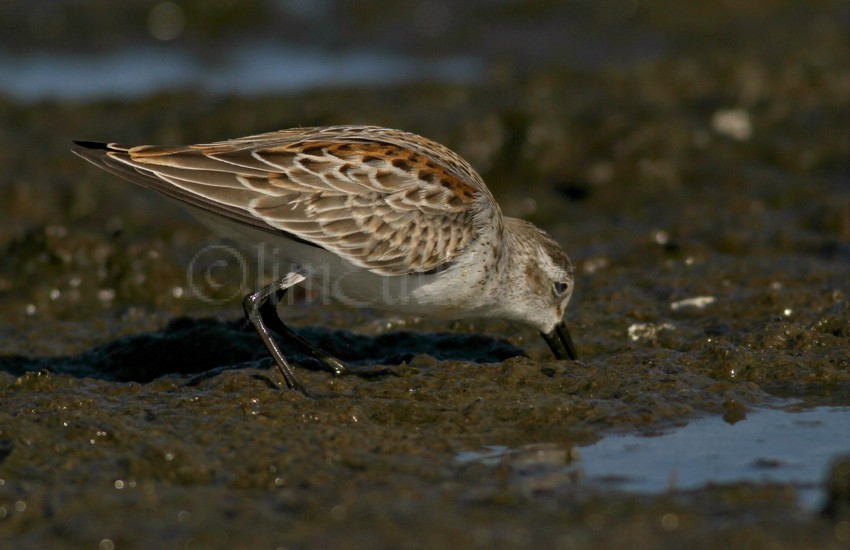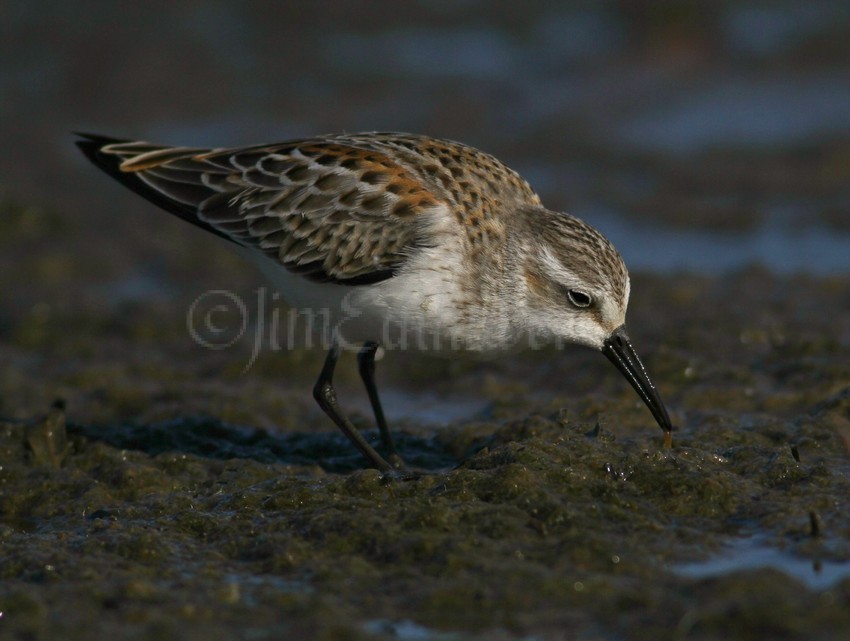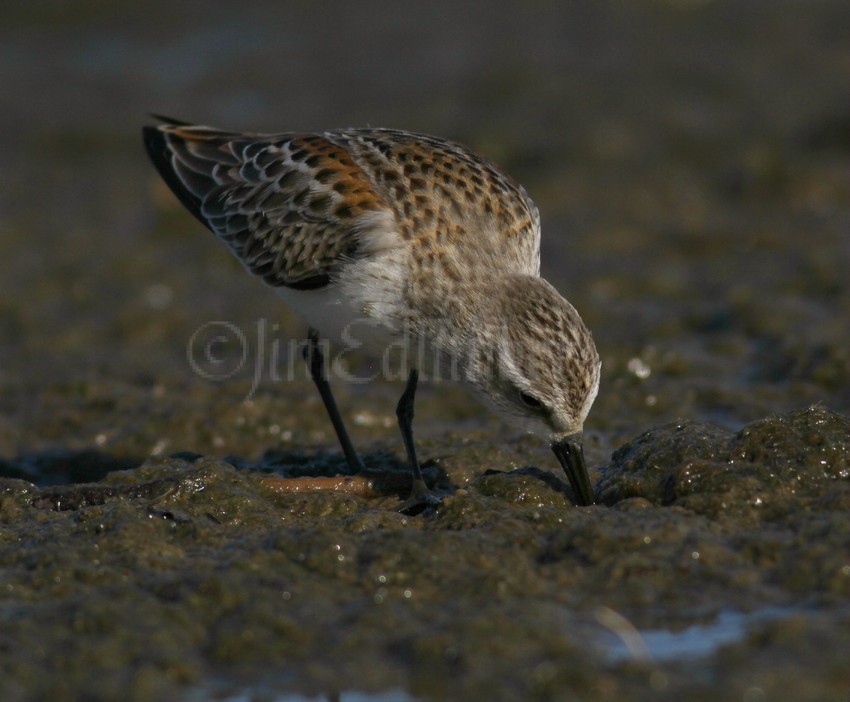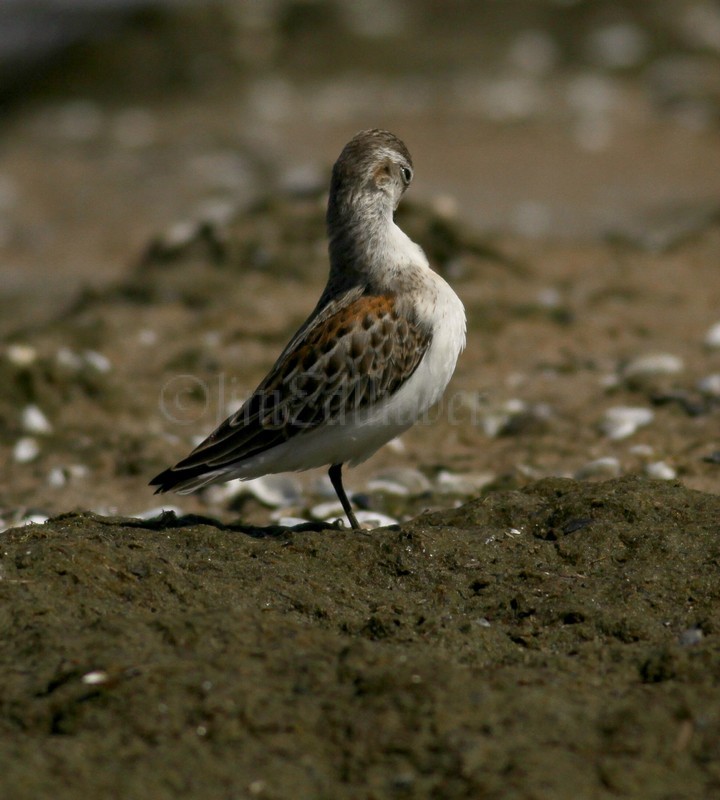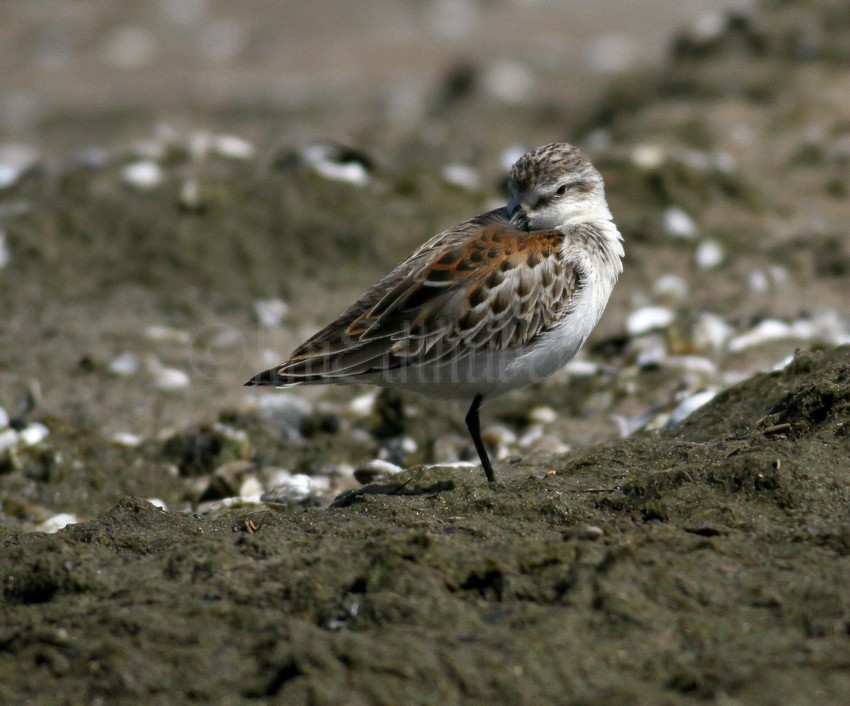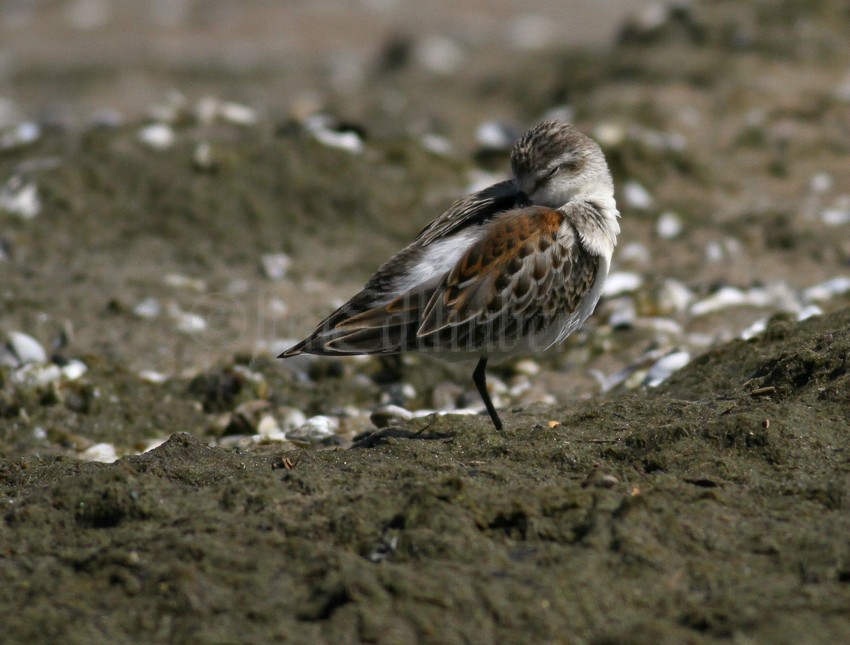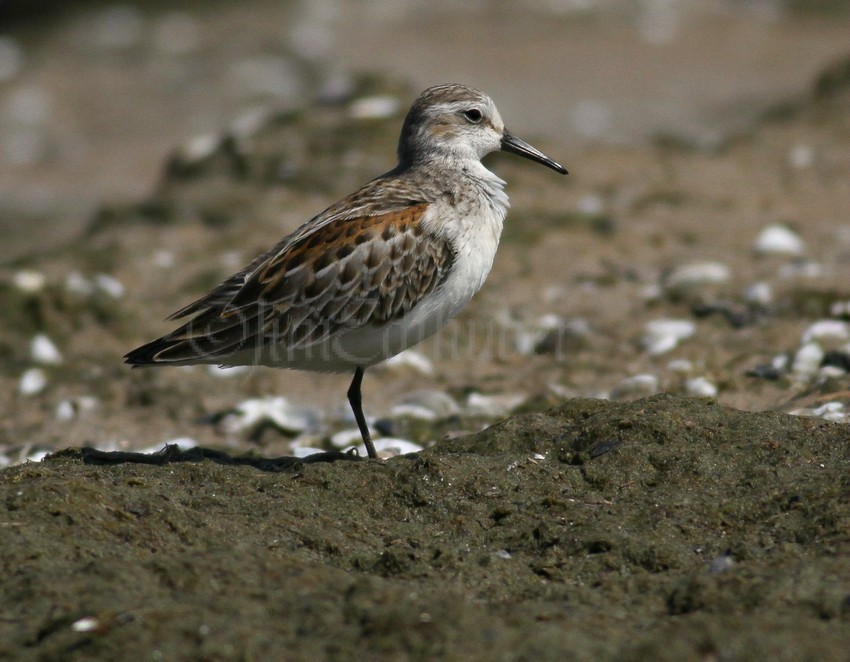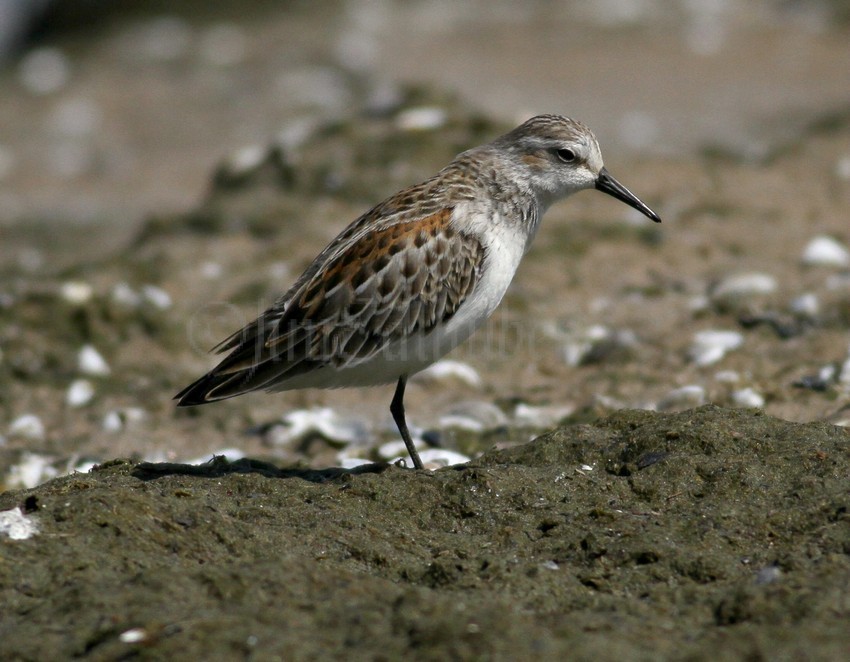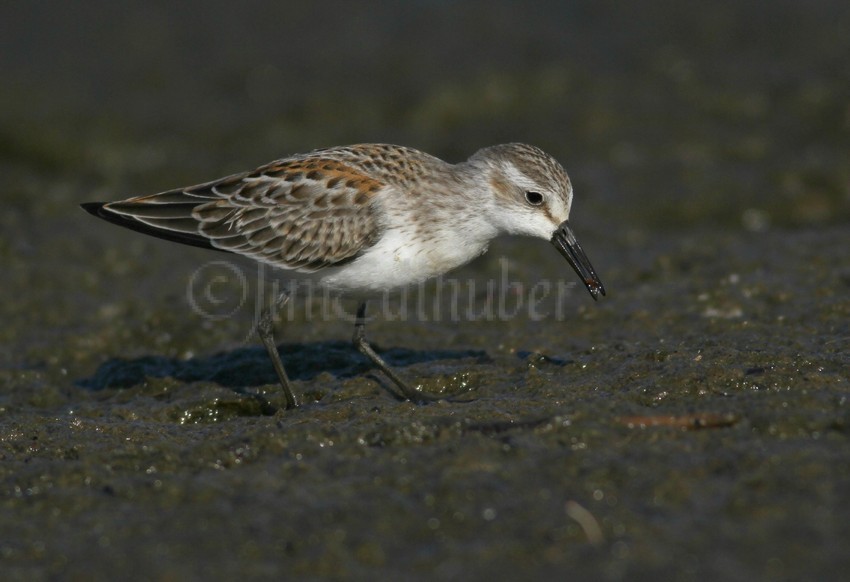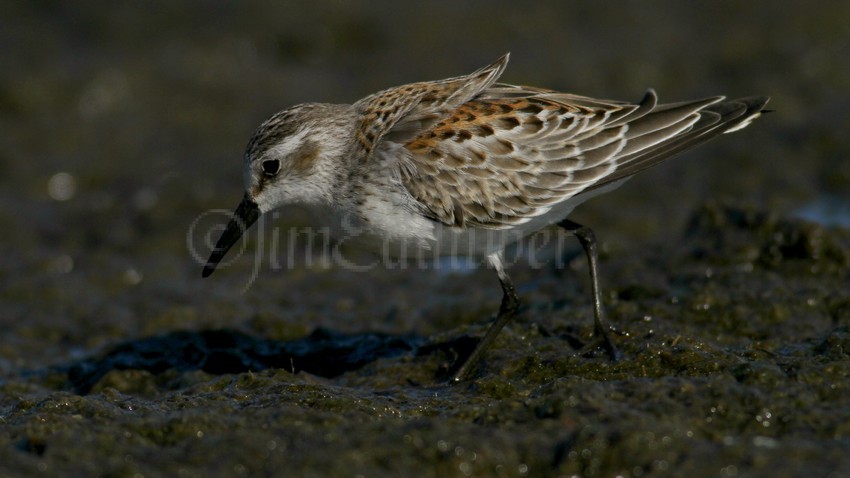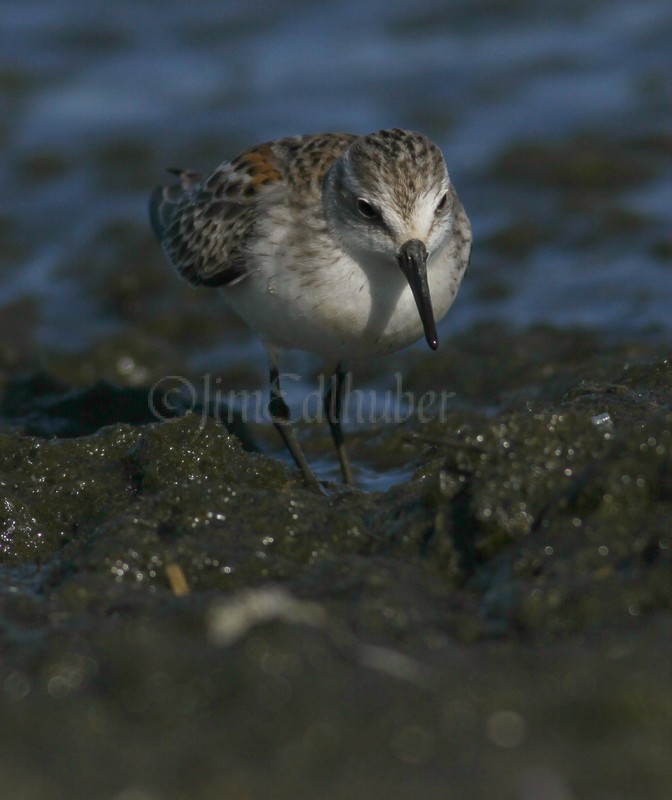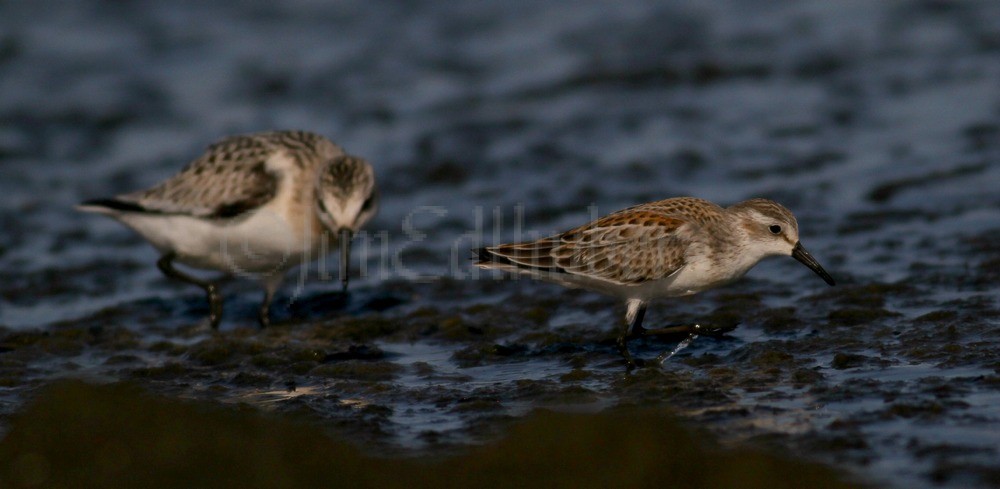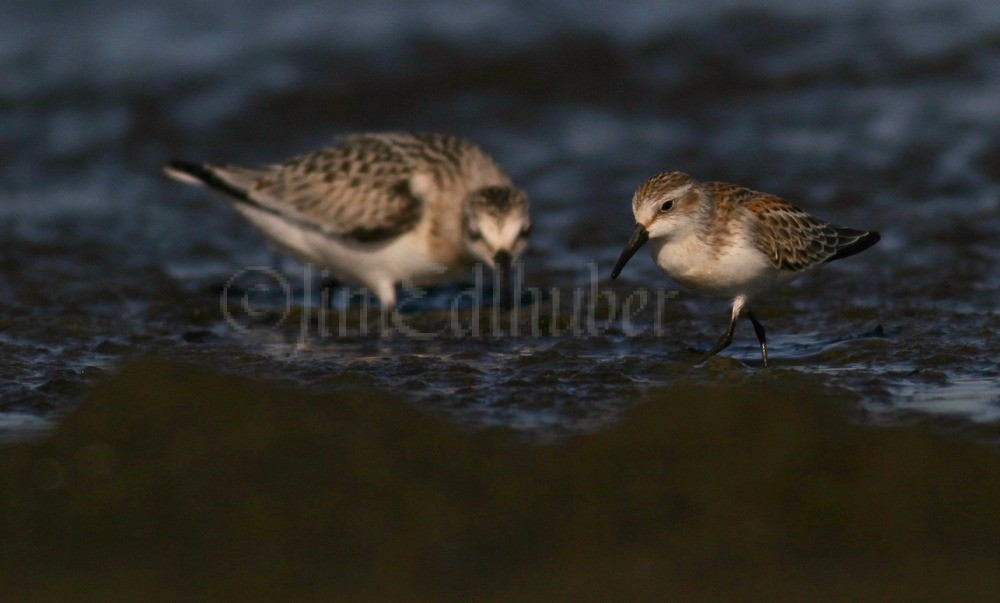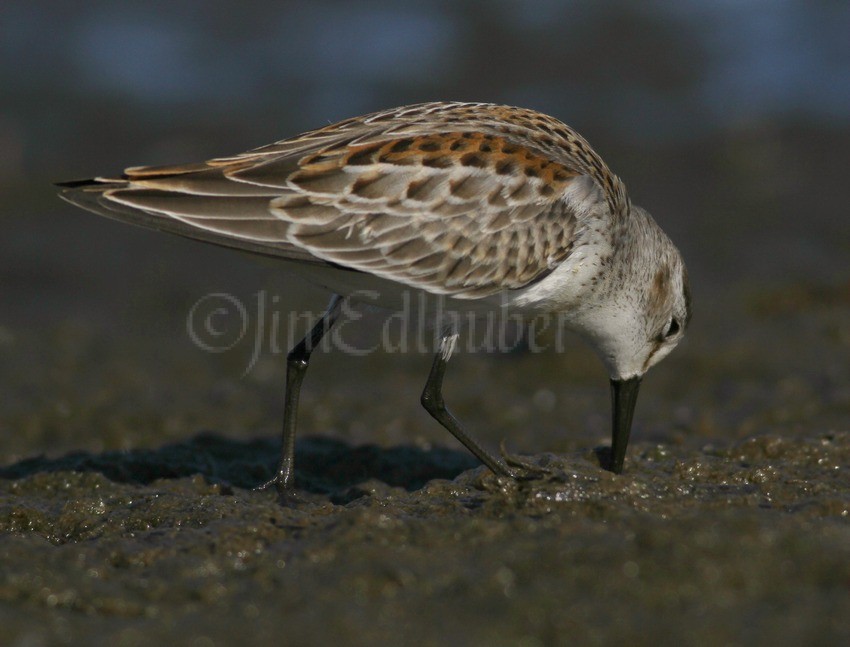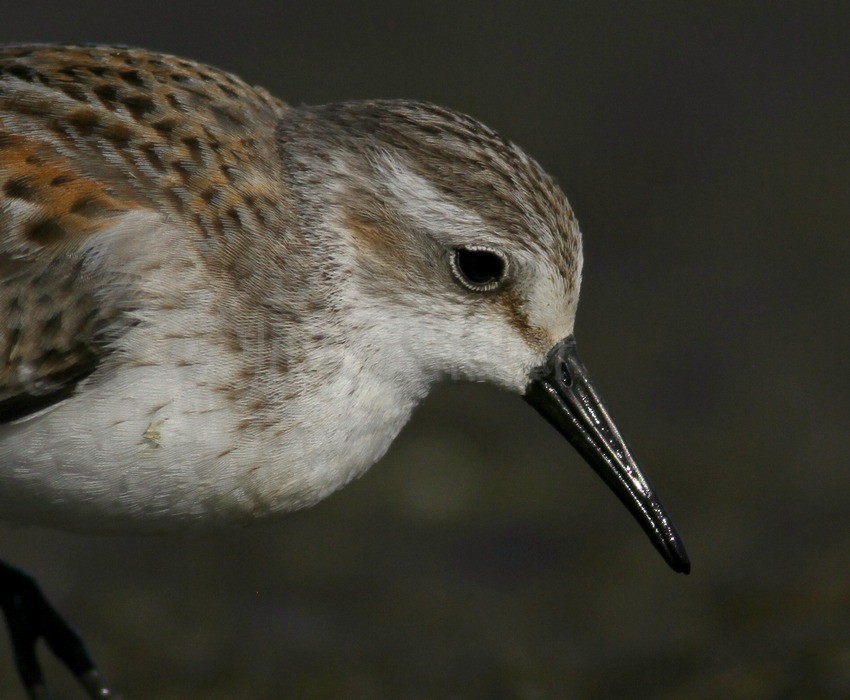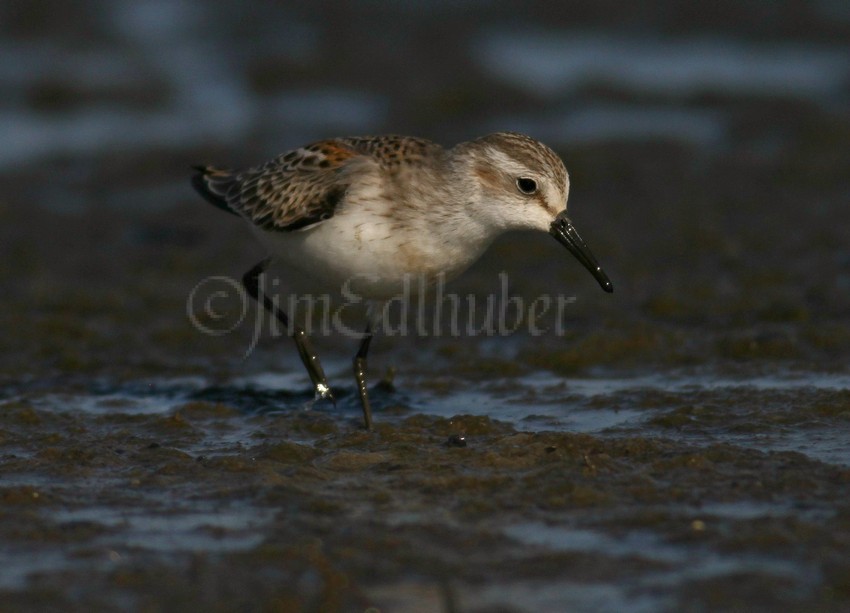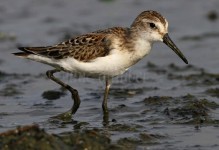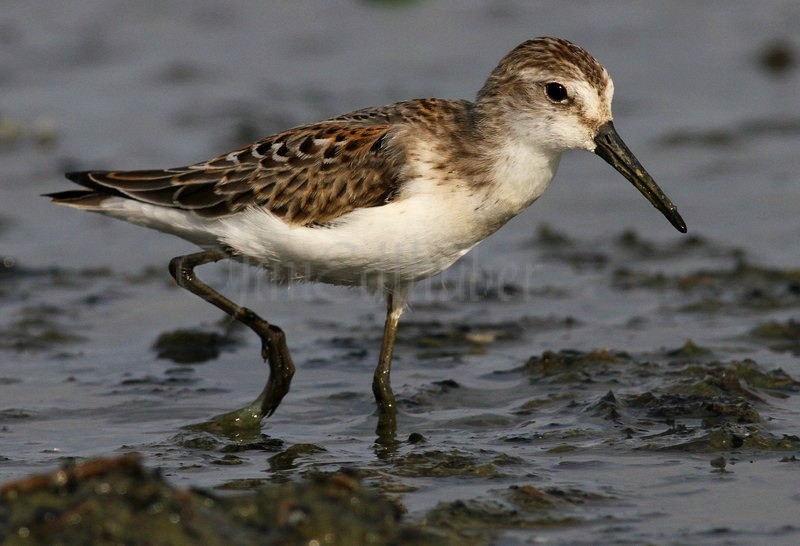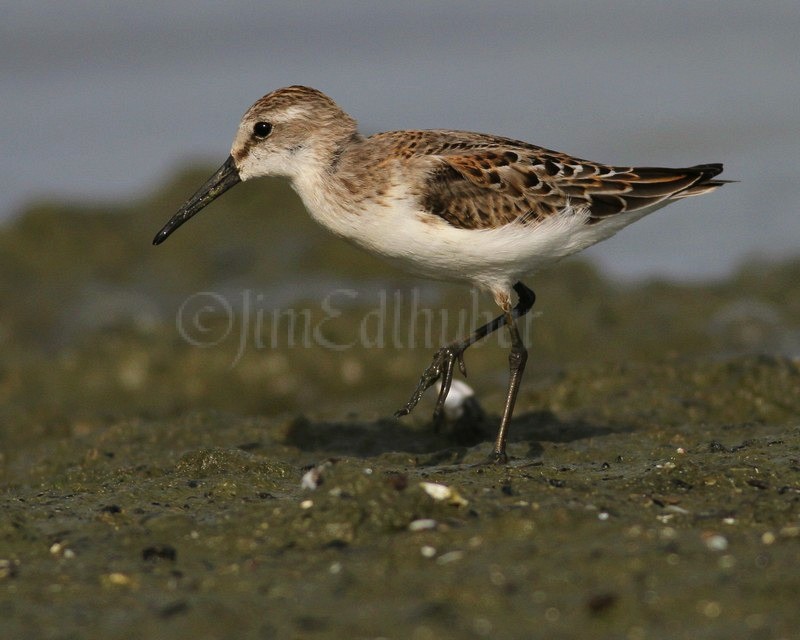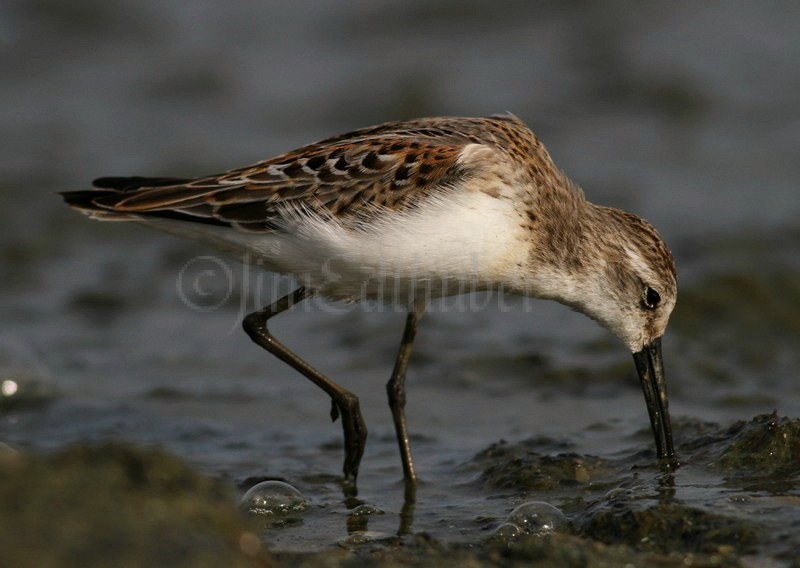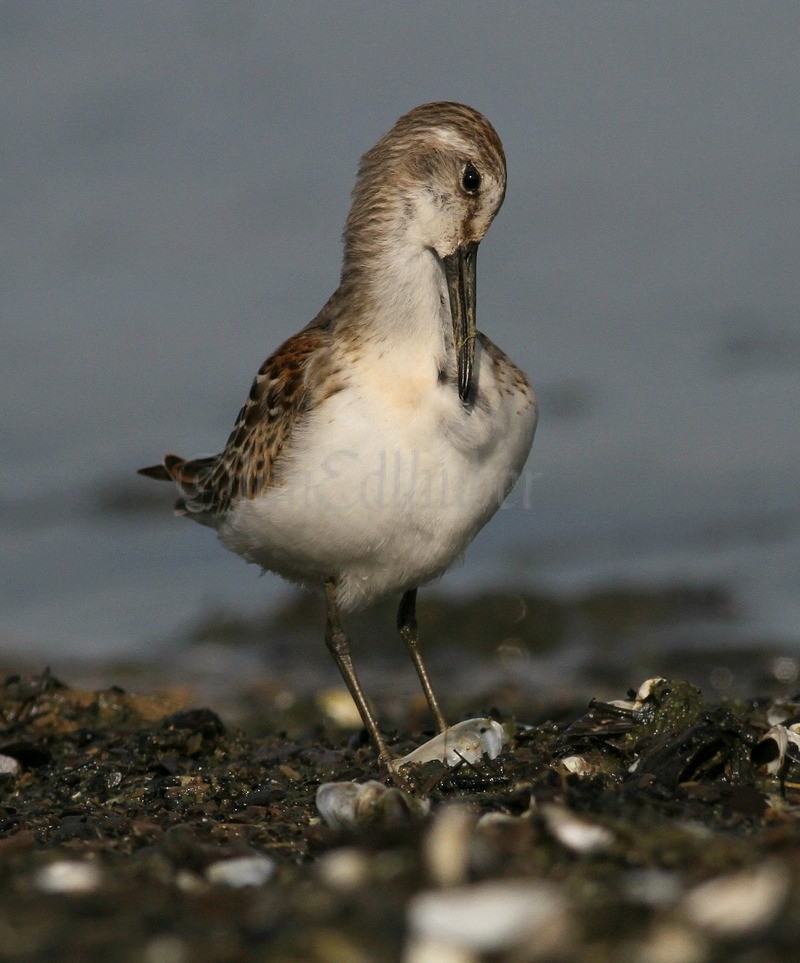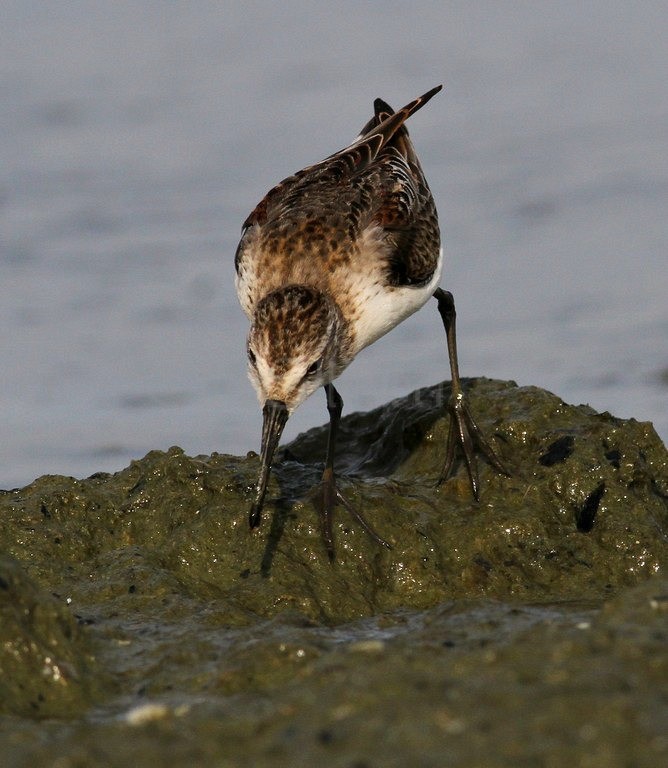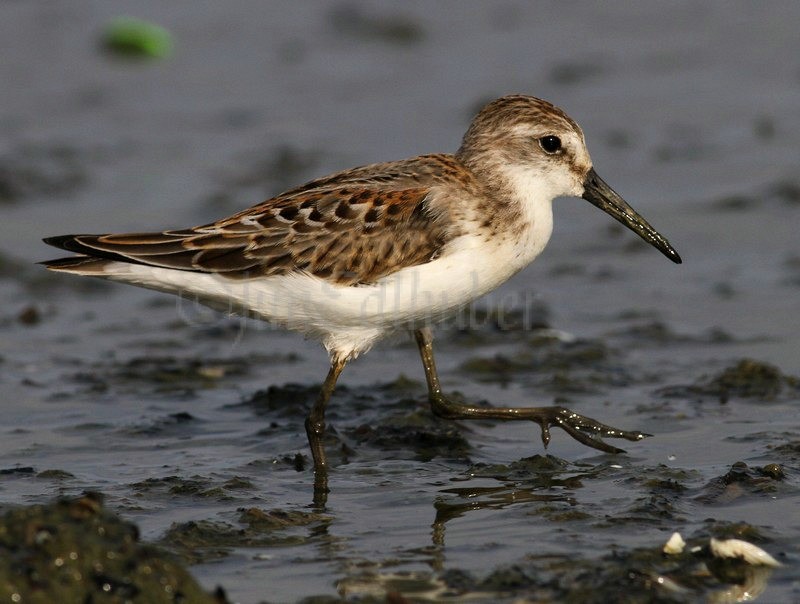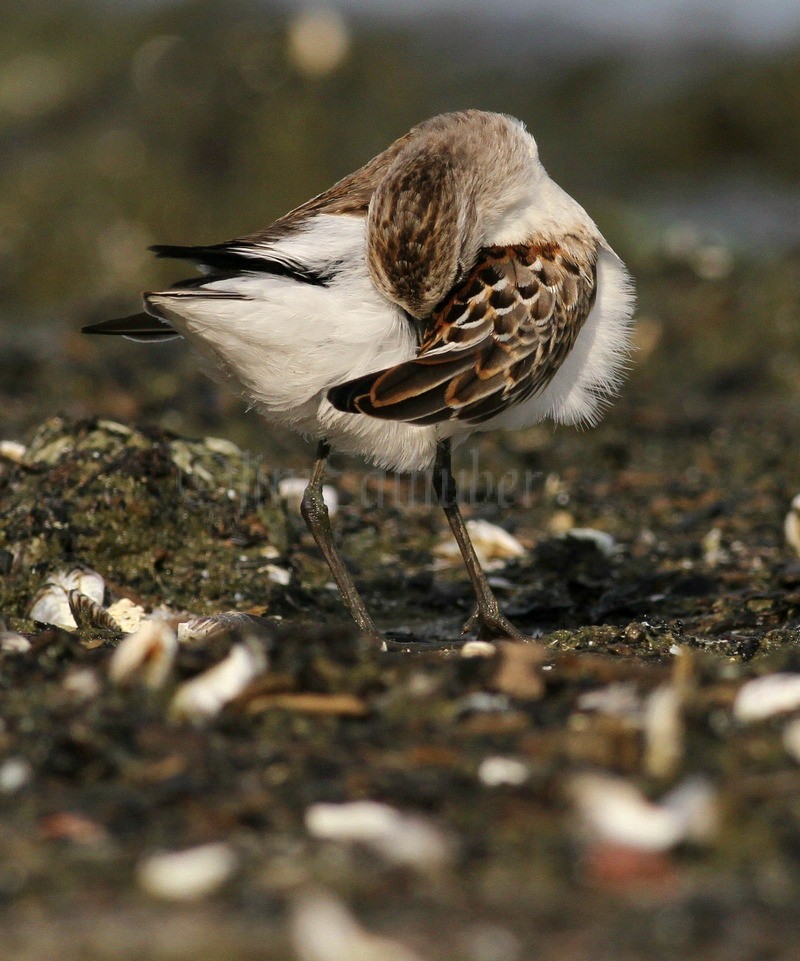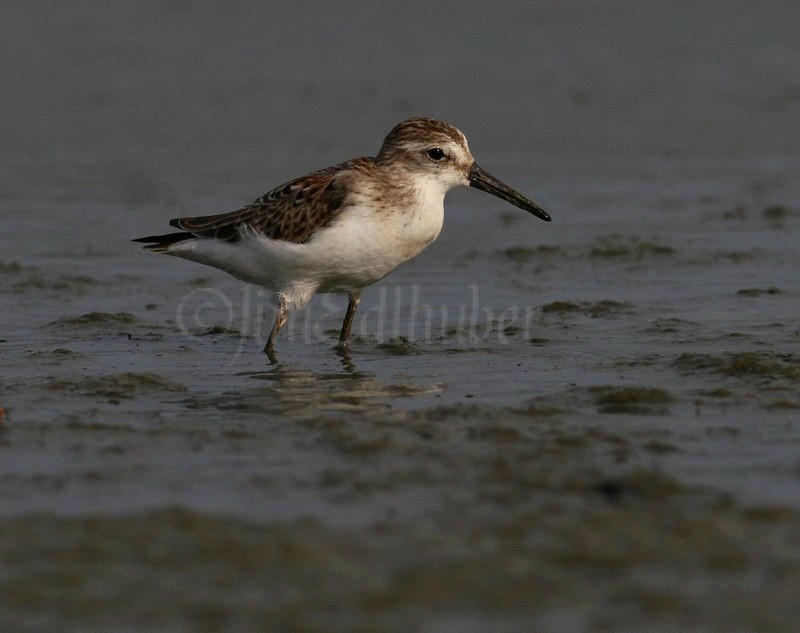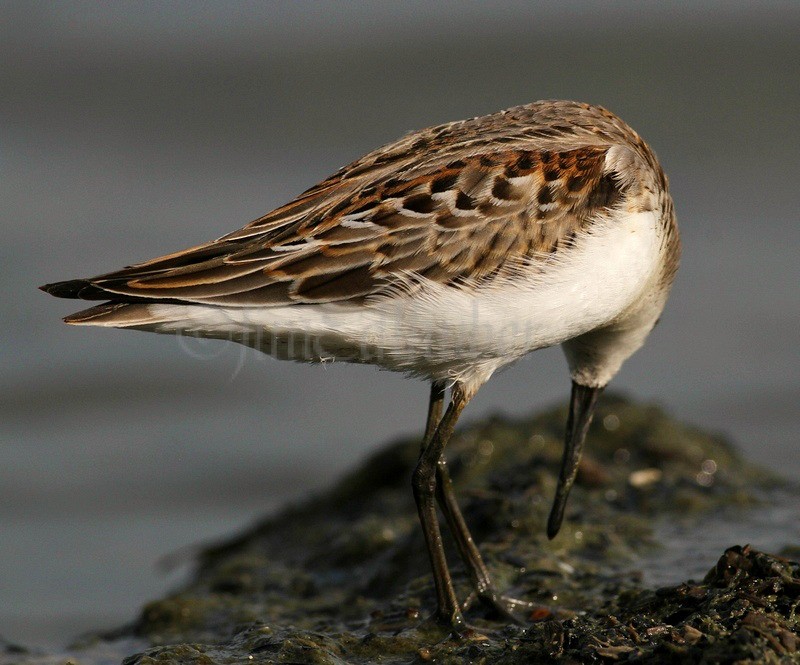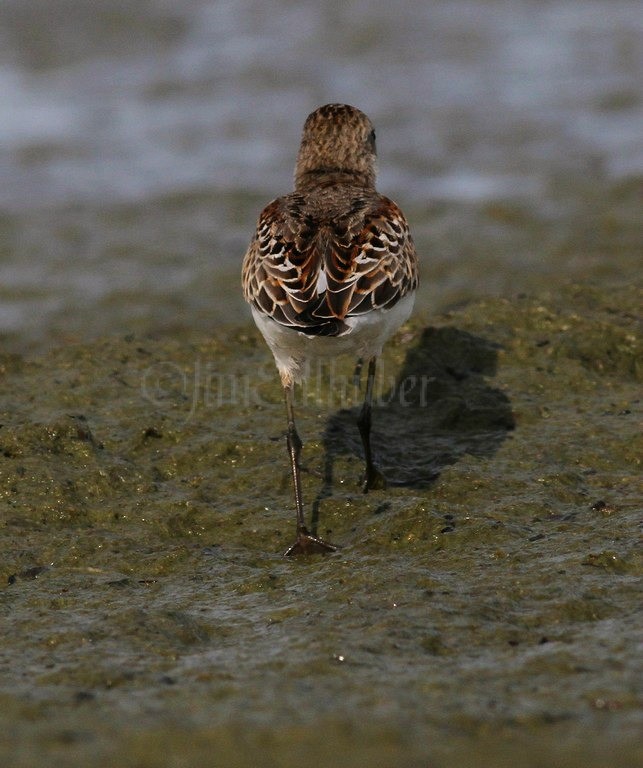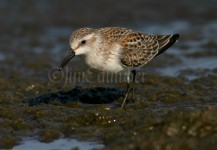
I decided to make a trip to Bradford Beach this morning in Milwaukee. It was an exciting few hours. When I arrived at the algae mat on the south end of the beach, I noticed what I thought was a Western Sandpiper. Moments later it was out of sight. I walked the beach to the north as there was another good size algae mat. Nothing was there other than Sanderlings. When I returned to the south end of the beach other birders had arrived and they confirmed that a Western Sandpiper was present. It was a juvenile. We had nice views, and it came and went during the day as it was flushed from the areas as many folks were out walking the beach and enjoying the nice weather. At one time I stood near the south mat and a Plover appeared, not sure which one, seconds later it was gone! Moments later a Ruddy Turnstone appeared, that bird was also gone in less than 30 seconds. Bradford Beach has really been bringing in some great shorebirds recently, I hope it continues! It was nice too, to see a few birding friends I have not seen for a while. Images were taken on September 14, 2014.
Western Sandpiper
Binomial name: Calidris mauri
Category: Sandpipers, Phalaropes, and Allies
Description: Brown feathers on back with white underparts. Dark legs and bill.
Size: 5.5” – 6.7” long, 10.2” – 14.6” wingspan
Weight: 0.8 oz. – 1.2 oz.
Habitat: Coastal tundras, shorelines, and mudflats
Diet: Small insects such as flies and beetles as well as spiders, mollusks, and small crustaceans
Nesting: The male builds several nests out of grasses, leaves, and lichens pressed into a mud flat or shoreline. He will then sing to attract a mate, and she will choose the nest. Both parents will incubate the eggs. The typical clutch size is 3-5 eggs. The female may stay and help care for the chicks, or she may leave before the eggs hatch and the male will be the sole caretaker.
Notes: Western Sandpipers breed in Siberia and Alaska, although migration will take them down the West Coast to California. Very rarely are they seen as far east as the Midwest.
Images from a Western Sandpipers visit to Bradford Beach Milwaukee Wisconsin on September 11, 2013: Image link

